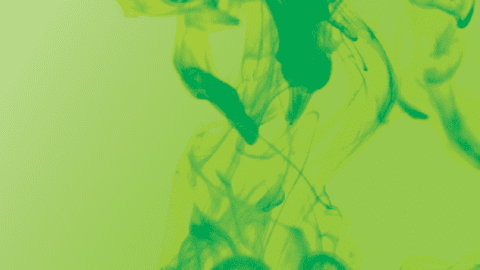Jim Adams found that in an evaluation of hair samples from children with autism that lithium values were significantly lower in young children of autism and their mothers. I have made similar observations on many children with autism tested through The Great Plains Laboratory. The lithium values of some children with autism are in the lowest one percentile. Ironically, the use of highly purified water to prevent ingestion of toxic chemicals may have deprived pregnant women of a trace amount of lithium found in tap water needed for normal brain development and this deficiency appears to be a significant autism risk factor. This switch to purified bottled water has taken place in the past 20 years during the same time as the surge in the autism epidemic.
The tenfold increase in bottled water consumption (image 1) coincides nearly exactly with an approximate ten-fold increase in autism incidence over the same time period. IWilliam Shaw, PhD, is board certified in the fields of clinical chemistry and toxicology by the American Board of Clinical Chemistry. Before he founded The Great Plains Laboratory, Inc., Dr. Shaw worked for the Centers for Disease Control and Prevention (CDC), Children’s Mercy Hospital, University of Missouri at Kansas City School of Medicine, and Smith Kline Laboratories.t is possible that this factor might in fact be equal in importance to mercury exposure as an autism risk factor.
In very small amounts lithium appears to be an essential element needed for good mental health. Areas of the country where lithium is present at high levels in the drinking water have less violence and crime. A study of 27 Texas counties found that the incidences of suicide, homicide and rape were significantly higher in counties whose drinking water supplies contained little or no lithium compared to counties with higher water lithium levels, even after correcting for population density.
Corresponding associations with the incidences of robbery, burglary and theft were also significant, as were associations with the incidences of arrests for possession of opium, cocaine and their derivatives. In addition, I have commonly found very low lithium values in hair samples of patients with schizophrenia. Furthermore, hair lithium has been shown to be a good indicator of lithium deficiency. Scalp hair lithium levels reflect the average intakes of bioavailable lithium over a period of several weeks to months and represent a noninvasive means of determining the dietary lithium intakes. Furthermore, lithium is needed to transport folate and vitamin B-12 into the brain. The common deficiencies of lithium may be one of the reasons children with autism require such high doses of certain forms of these vitamins.
A typical hair profile of a child with autism is shown in the adjoining diagram, demonstrating the extremely low lithium intakes common in autism. Blood tests done at conventional medical laboratories measure lithium but only are useful to measure the extremely high lithium levels associated with lithium drug therapy. Such tests are useless for the measurement of the very low lithium levels associated with nutritional lithium.
A provisional Recommended Daily Allowance (RDA) for a 70 kg adult of 1,000 mcg/day (about 1% of the dose of lithium commonly used as a pharmaceutical agent) has been suggested for a 70 kg adult, corresponding to 14.3 mcg per kg body weight. Note carefully that mcg stands for micrograms, not milligrams (mg)! Doses of lithium between 150-400 mcg per day (doses that are nutritional rather than pharmacological) resulted in improved mood in drug abusers, some of whom had a long history of drug abuse. The nutritional use of lithium is completely safe. No safety assessments or blood tests need to be done for nutritional supplementation of lithium in contrast to the use of lithium as a drug, which requires blood testing to prevent toxic overdose. If hair values are low or a person only drinks purified deionized or reverse-osmosis water, I think the person should take lithium supplements. New Beginnings Nutritionals has a convenient liquid that contains 50 mcg lithium per drop. I remember when the bottled water products were first launched and I was incredulous that people would pay for a product they could get for virtually nothing simply by turning on their faucets. Now I drink reverse-osmosis water, which is essentially free of trace elements (and toxic chemicals), and I take 500-mcg lithium daily by adding lithium drops to my orange juice.
CLINICAL REFERENCES
- Moore GJ, et al. Lithium-induced increase in human brain grey matter. Lancet. 2000 Oct 7; 356(9237): 1241-2. http://www.ncbi.nlm.nih.gov/pubmed/11072948
- Schrauzer GN. Lithium: occurrence, dietary intakes, nutritional essentiality. J Am Coll Nutr. 2002 Feb;21(1):14-21.http://www.ncbi.nlm.nih.gov/pubmed/11838882
- Schrauzer G.N., Shrestha K.P., Flores-Arce M.P. Lithium in scalp hair of adults, students and violent criminals. Effects of supplementation and evidence for interactions of lithium with Vitamin B and other trace elements. Biological Trace Element Research, 1992 Aug 34 (2): 161 – 76. http://www.ncbi.nlm.nih.gov/pubmed/1381936
- J.B. Adams, C.E. Holloway, F. George, D. Quig. Analyses of toxic metals and essential minerals in the hair of Arizona children with autism and associated conditions, and their mothers. Biological Trace Element Research. 110: 193-209, 2006.http://www.ncbi.nlm.nih.gov/pubmed/16845157




